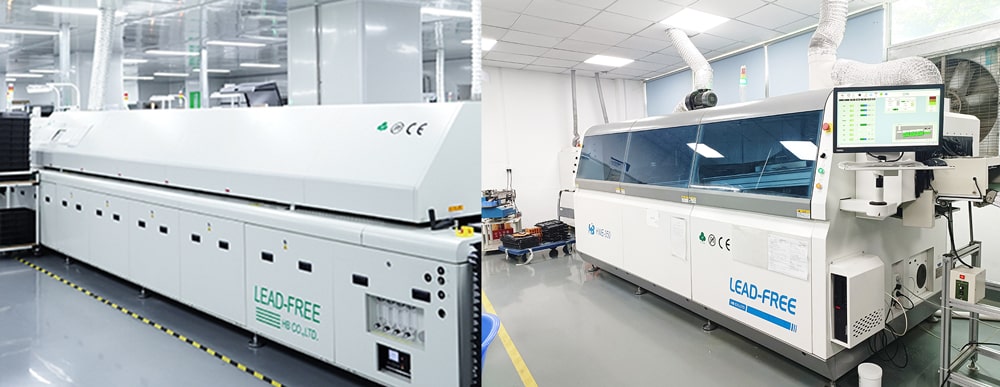How to choose wave soldering or reflow soldering?
Wave soldering and reflow soldering are the two main methods used in PCB assembly. Each method has its own unique characteristics. How to choose between them in your project?

What is wave soldering?
Wave soldering is a traditional soldering process that works by passing a PCB through a wave of molten solder to solder components. The molten solder is pumped to create a standing wave, which the PCB passes through at a controlled speed. Wave soldering is mainly used for through-hole components, but can also be used to process some surface mount devices (SMDs).
What is reflow soldering?
Reflow soldering is a modern soldering method that first applies solder paste to the PCB through a template, then places the components, and then heats the entire assembly in a reflow oven. The heating process melts the solder paste to form a reliable solder joint. This method is mainly used for surface mount technology (SMT) components.
How to choose?
1. According to the component type
Wave soldering is very suitable for through-hole components and some SMD components on the bottom layer of the PCB. Reflow soldering is well suited for SMT components and can handle very fine pitch devices.
2. According to PCB complexity
Single-sided PCBs containing through-hole components are suitable for wave soldering. Double-sided and multi-layer PCBs containing dense SMT components should use reflow soldering.
3. According to production volume
Wave soldering is cost-effective for high-volume production of simple circuit boards. Reflow soldering is more flexible and suitable for both small and large-volume production.
4. According to temperature
Reflow soldering has better temperature control and is suitable for temperature-sensitive components. Wave soldering subjects components to higher thermal stress.
5. Hybrid technology
For circuit boards containing both through-hole and surface mount components, a combination of the two methods may be required. Typically, reflow soldering is performed first, followed by selective wave soldering.
6. Cost considerations
Wave soldering has a higher initial equipment cost, but lower operating costs. Reflow soldering has lower maintenance costs, but requires regular replacement of expensive solder paste.
7. Quality requirements
Reflow soldering generally produces more consistent and higher quality solder joints. Wave soldering may have more defects and require more inspection.
Conclusion
Making the right decision between wave soldering and reflow soldering requires considering your specific requirements, production volume, component mix, and quality standards to determine the most appropriate soldering method.















